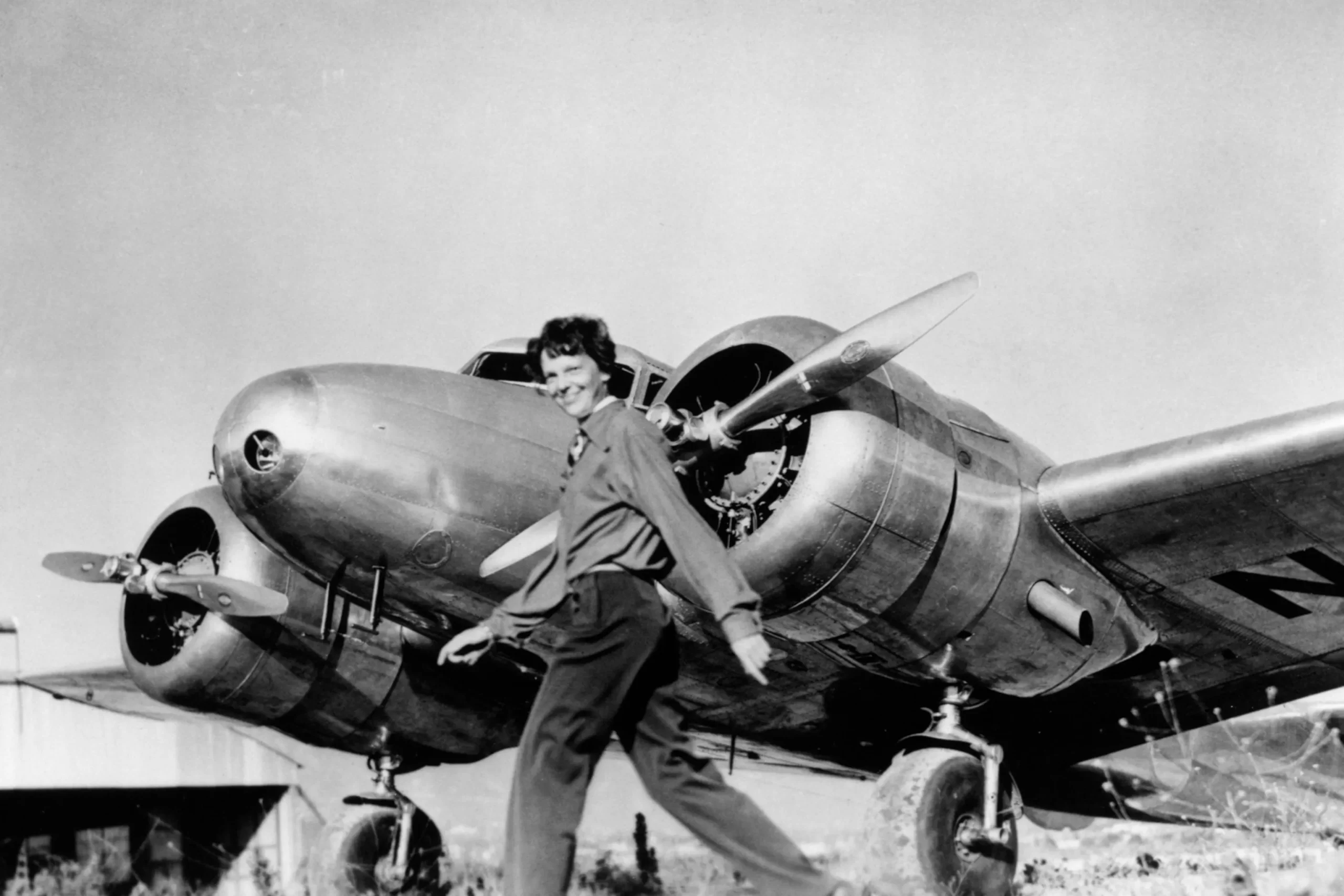Eighty-seven years ago, the vanishing of Amelia Earhart over the vast expanse of the central Pacific Ocean set the stage for one of the most enduring enigmas in the annals of aviation history.
While numerous conjectures regarding her destiny have surfaced over the decades, a recent development by a deep-sea exploration team may furnish an additional fragment to this puzzling narrative.
Operating out of Charleston, South Carolina, Deep Sea Vision divulged this week that their extensive search for the wreckage of Earhart’s Lockheed 10-E Electra had yielded a sonar image in the Pacific Ocean, presenting what they believe to be her elusive aircraft.

Conducting an exhaustive scan covering over 5,200 square miles of the ocean floor since September, the team shared sonar images on social media, showcasing an object with the silhouette of a plane resting on the ocean bed.
Accompanied by a video documenting their underwater quest, the 16-member team employed cutting-edge underwater drone technology throughout their exploration.
The financial backing for this $11 million search initiative came from Tony Romeo, a pilot and former U.S. Air Force intelligence officer, who financed the endeavor by liquidating his commercial real estate holdings.
Reflecting on the venture, Romeo expressed his enthusiasm, stating, “This is maybe the most exciting thing I’ll ever do in my life. I feel like a 10-year-old going on a treasure hunt,” as reported by the Wall Street Journal.
Amelia Earhart and her navigator, Fred Noonan, vanished on July 2, 1937, while traversing the Pacific Ocean during Earhart’s groundbreaking endeavor to become the first female aviator to circumnavigate the globe.
Their disappearance triggered an extensive and costly search and rescue operation by the U.S. Navy and Coast Guard, culminating in the duo being declared dead two years later.
Despite multiple technologically advanced deep-sea searches conducted over the years, none succeeded in locating Earhart’s plane.
According to Romeo, his team’s “Hugin” submersible captured the sonar image of the aircraft-like object approximately 16,000 feet below the Pacific Ocean’s surface, less than 100 miles from Howland Island, the planned stop for Earhart and Noonan before their disappearance.
The discovery occurred three months into the expedition, making it impractical to turn back at that stage. Consequently, the team intends to return for a more detailed examination.
While sonar experts caution that only a closer inspection can provide conclusive evidence matching Earhart’s Lockheed aircraft, the excitement surrounding the potential breakthrough persists.
Alternative theories regarding Earhart’s disappearance persist. Ric Gillespie, a seasoned researcher of Earhart’s ill-fated flight, asserted in 2018 that Earhart crash-landed on Gardner Island, approximately 350 nautical miles from Howland Island.
According to Gillespie, she sent distress signals for nearly a week before her plane was swept into the sea. Reports suggest that these calls for help were not only intercepted by the Navy but also by individuals across various locations, including Florida, Iowa, and Texas.
Gillespie’s organization, the International Group for Historic Aircraft Recovery, has claimed to discover forensic evidence, including bones, on the island that likely belonged to Earhart.
Despite these assertions, nearly 90 years have passed without any conclusive evidence, and Tony Romeo’s team believes that their sonar image might finally unveil the long-lost aircraft.
Joined by two of his brothers, who share his aviation background, Romeo asserted that their unique expertise as pilots brought a fresh perspective to the search.
“We always felt that a group of pilots were the ones that are going to solve this, and not the mariners,” he remarked to the Wall Street Journal, underscoring the interdisciplinary approach taken in this ongoing quest for answers.


